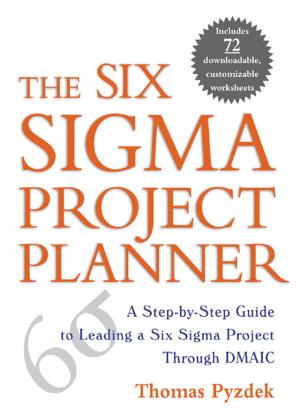Technological Change and Capacity Utilization
Nonfiction, Science & Nature, Technology, Industrial Technology, Business & Finance, Industries & Professions, Industries| Author: | Hemanta Saikia | ISBN: | 9781311307996 |
| Publisher: | Hemanta Saikia | Publication: | April 28, 2015 |
| Imprint: | Smashwords Edition | Language: | English |
| Author: | Hemanta Saikia |
| ISBN: | 9781311307996 |
| Publisher: | Hemanta Saikia |
| Publication: | April 28, 2015 |
| Imprint: | Smashwords Edition |
| Language: | English |
Technology is the guiding principle for present world and a key player of the international economy. Economics and technological evolutionary theory have a long history together. Both are not a solo process, rather it is a mixture of interlinked processes where the evolution of technology is a critical factor in economic growth throughout history. Notably, the sharp turn in economic growth of the eighteen century coincides with the great technological leap of the industrial sector. The main impetus of a capitalist is to make the profit, and they may consider a little about the social welfare while applying a technology. In this regard, Sen’s works provide a model of choice of technology from the point of view of inter-temporal welfare paradigm. However an industry must attain a minimum level of standard of growth just as a beggar first should have a minimum food requirement, then he could think of preferences among the alternatives. In this framework, factors of production play a unique and decisive role in the production of goods and services. However, not only factors of production but also their proportion with which they are used is also very important to the productivity as well as from the employment point of view. Nevertheless, from the farm efficiency point of view, it is important to analyse what is the pragmatic factor proportion as unless an industrial unit is strong enough to carry out its optimum plant; it is become hard to determine which technique is suitable for a particular region or country. Alternatively, capacity utilization has been comprehensively used in the literature and is an extremely useful indicator of industrial performance as it pictures both the use of scarce resources as well as the state of demand. Capacity utilization measures the proportion of available productive capacity of an economic unit that is currently utilized. The industry-wide capacity utilization is used to determine whether production conditions are rigid or flexible and thus whether restrictive or expansionary macroeconomic policies would be effective and also in assessing the future investment demand that trend to vary directly with the increase in capacity utilization.
Technology is the guiding principle for present world and a key player of the international economy. Economics and technological evolutionary theory have a long history together. Both are not a solo process, rather it is a mixture of interlinked processes where the evolution of technology is a critical factor in economic growth throughout history. Notably, the sharp turn in economic growth of the eighteen century coincides with the great technological leap of the industrial sector. The main impetus of a capitalist is to make the profit, and they may consider a little about the social welfare while applying a technology. In this regard, Sen’s works provide a model of choice of technology from the point of view of inter-temporal welfare paradigm. However an industry must attain a minimum level of standard of growth just as a beggar first should have a minimum food requirement, then he could think of preferences among the alternatives. In this framework, factors of production play a unique and decisive role in the production of goods and services. However, not only factors of production but also their proportion with which they are used is also very important to the productivity as well as from the employment point of view. Nevertheless, from the farm efficiency point of view, it is important to analyse what is the pragmatic factor proportion as unless an industrial unit is strong enough to carry out its optimum plant; it is become hard to determine which technique is suitable for a particular region or country. Alternatively, capacity utilization has been comprehensively used in the literature and is an extremely useful indicator of industrial performance as it pictures both the use of scarce resources as well as the state of demand. Capacity utilization measures the proportion of available productive capacity of an economic unit that is currently utilized. The industry-wide capacity utilization is used to determine whether production conditions are rigid or flexible and thus whether restrictive or expansionary macroeconomic policies would be effective and also in assessing the future investment demand that trend to vary directly with the increase in capacity utilization.















